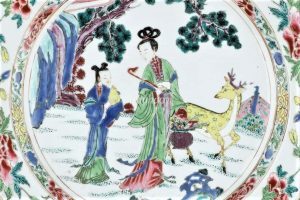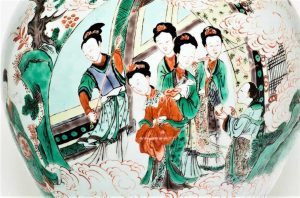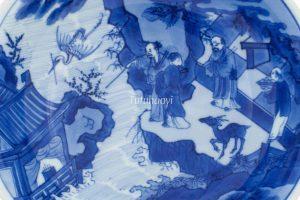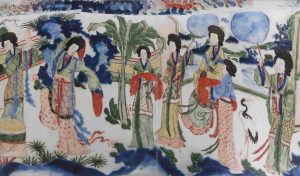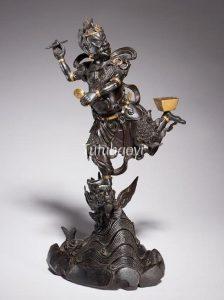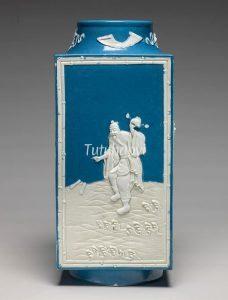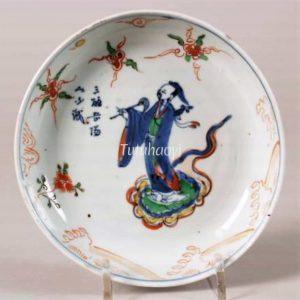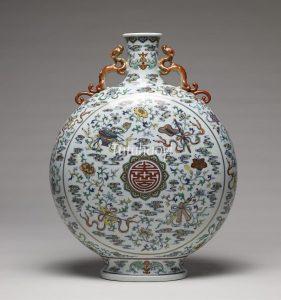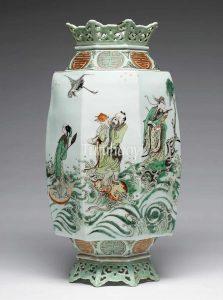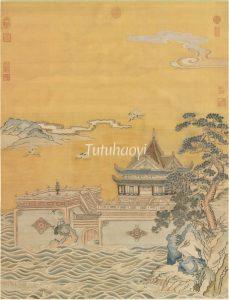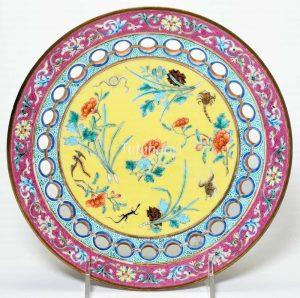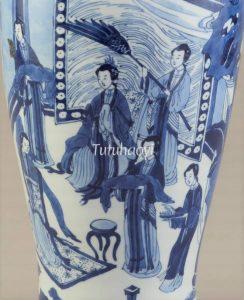Showing Results Containing
Chinese people deeply respect the elderly and traditionally consider a long existence to be one of the most important blessings in a person’s life. Here are many examples of how artists have combined a variety of longevity symbols to reinforce the...
In Chinese culture, the Mid-Autumn Moon Festival is related to the legendary fairy Chang E, the Moon Goddess. We often see a hare, her loyal companion, and an osmanthus tree in the picture with her against a background of the Moon Palace. However,...
More often than not, traditional Chinese motifs or symbols are not receiving their deserved attention, being given simplistic or inadequate labels and inaccurate explanations in our museums, catalogues, or even scholarly writing. The treatment of ...
This is an overview by Dr Yibin Ni on how the topic of ‘The Birthday Party of the Queen Mother of the West’ was depicted on Chinese artworks, from woodblock print during Ming dynasty to scroll painting and porcelains in Qing dynasty.
As the deity who grants success in the imperial examinations, Kui Xing 魁星 is revered as the God of Literature. The image of Kui Xing is often presented as a ...
The term ‘Kui Xing’ originally referred to the North Star (北斗 Bei Dou). As stated in the Historical Records by Sima Qian (司马迁 145BCE – ?) , ‘Kui is the first star of the Great Dipper constellation’. Therefore, Kui also carries the meaning of being the first.
Gu Yanwu (顾炎武 1613–1...
Cao Guojiu (曹国舅) is one of the later comers among the legendary Eight Daoist Immortals and has the fewest colourful stories attached to him. During the ...
As a young man, Lv Dongbin (吕洞宾, or Lü Dongbin) passed several rounds of civil-service examinations and was twice appointed as a county magistrate. After being bored with officialdom, he went to become a recluse in the mountains. Not until he metContinue Reading
In this motif composition, the eight Daoist Immortals (ba xian 八仙) are not depicted in figural images, but rather are represented by their dist...
Zhongli Quan (钟离权, or 汉钟离 Han Zhongli) is regarded as the most eminent among the Daoist Eight Immortals. Respected as ‘Zhengyang Zushi (正阳祖师)’ or the ‘Grand Master with Pure Yang Energy’, he is one of the founders of the northern school of the Complete Realisation (Quanzhen jiao 全真教) S...
In this scene, there are several Chinese longevity symbols such as the
In traditional Chinese customs, the fifth day of the fifth month of the lunisolar calendar is regarded as one of the most dangerous days of the year when evil spirits and hazardous creatures lurked around. Notably, five noxious creatures were identified, known as ‘Continue Reading
Summer solstice, the longest day in the year, occurs in the fifth month of the Chinese calendar and Chinese astronomy believes that it stands for the apogee of the yang force in the annual cycle. Ancient philosophers warned in Classic of Changes (易经 Yi Jing) that ‘When the sun has reached the meridian h...
In Zhuangzi (庄子), an ancient Chinese text from the late Warring States period (476–221 BCE) and one of the two foundational texts of Daoism, the Queen Mother of the West (Xiwangmu 西王母) was mentioned as a deity who ‘obtained the Dao (the Way)’. According to the Scripture of Great Peace (Tai...
The Mid-Autumn Moon Festival falls on the night of full moon in the eighth lunar month. Chang’e, the Moon Goddess, is usually associated with this family-union occasion, together with the festival food – the moon cake (月饼). A legend recorded in an ancient Chinese book, The Huainanzi (淮南子 The Discourses of the Hu...
The osmanthus tree prominent in the Moon Palace came to be a symbol for elite talents in the Jin dynasty 晋朝 (265-420). In around Tang dynasty (618-907), ‘plucking a s...
